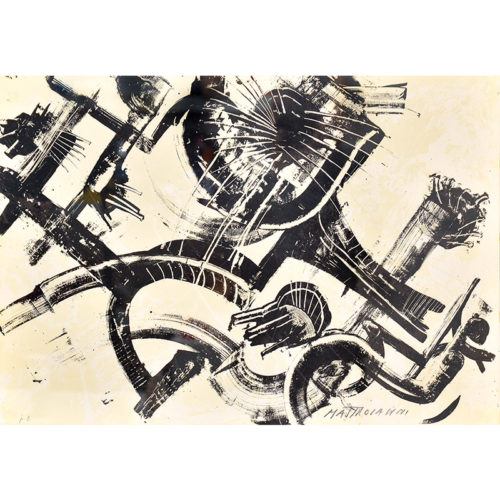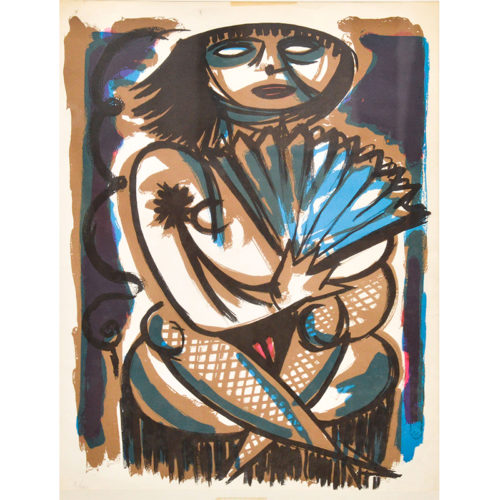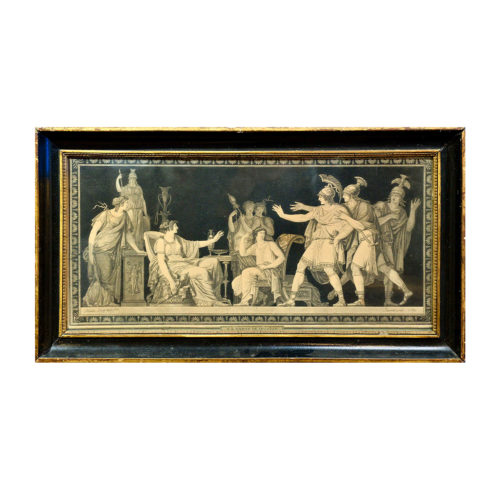Multiple print by Umberto Mastroianni (1910-1998), signed in the lower right corner and numbered (n. 1) on the lower left corner.
-
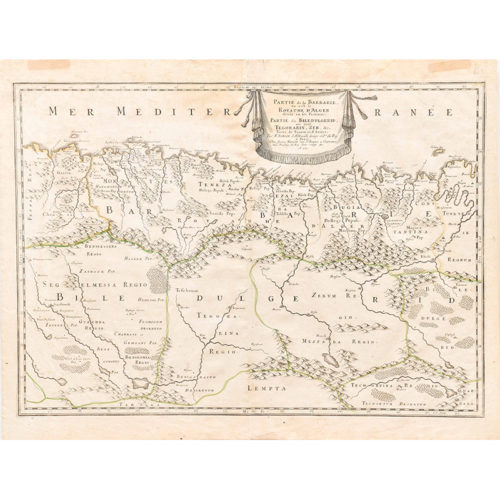 Beautiful example of the engraved map of Nicolas Sanson d'Abbeville from 1655 on the Algerian coast of North Africa. Nicolas Sanson (1600-1667), sometimes called Nicolas Sanson d'Abbeville or Sanson d'Abbeville, was the most important French cartographer of the 17th century. Tooley called Sanson "the founder of the French school of cartography". He started making cards at the end of 1620, and in 1630 he worked with Melchior Tavernier. Subsequently, Sanson worked in concert with the publisher Pierre Mariette, with whom he published his great atlas: general maps of all parts of the world (1658). After Sanson's death in 1667, his son Guillaume ran the business in collaboration with Alexis Hubert Jaillot. Guillaume has established himself as a full-fledged very important French cartographer. Period: 1655 Measurements: In frame H 65 X L 79 / Paper H 44 X L 56 cm
Beautiful example of the engraved map of Nicolas Sanson d'Abbeville from 1655 on the Algerian coast of North Africa. Nicolas Sanson (1600-1667), sometimes called Nicolas Sanson d'Abbeville or Sanson d'Abbeville, was the most important French cartographer of the 17th century. Tooley called Sanson "the founder of the French school of cartography". He started making cards at the end of 1620, and in 1630 he worked with Melchior Tavernier. Subsequently, Sanson worked in concert with the publisher Pierre Mariette, with whom he published his great atlas: general maps of all parts of the world (1658). After Sanson's death in 1667, his son Guillaume ran the business in collaboration with Alexis Hubert Jaillot. Guillaume has established himself as a full-fledged very important French cartographer. Period: 1655 Measurements: In frame H 65 X L 79 / Paper H 44 X L 56 cm -
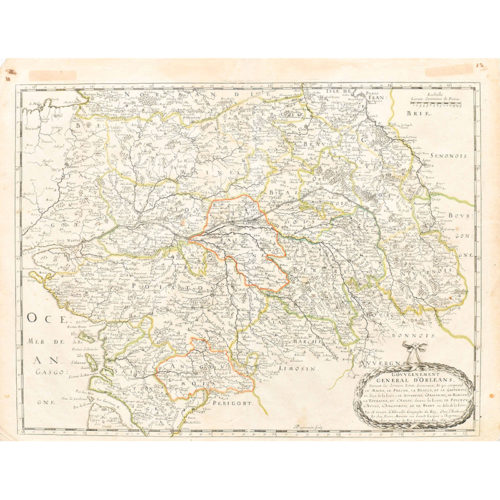 Beautiful example of the engraved map of Nicolas Sanson d'Abbeville from 1650. Nicolas Sanson (1600-1667), sometimes called Nicolas Sanson d'Abbeville or Sanson d'Abbeville, was the most important French cartographer of the 17th century. Tooley called Sanson "the founder of the French school of cartography". He started making cards at the end of 1620, and in 1630 he worked with Melchior Tavernier. Subsequently, Sanson worked in concert with the publisher Pierre Mariette, with whom he published his great atlas: general maps of all parts of the world (1658). After Sanson's death in 1667, his son Guillaume ran the business in collaboration with Alexis Hubert Jaillot. Guillaume has established himself as a full-fledged very important French cartographer.Period: 1650 Measurements: In frame H 65 X L 79 / Paper H 44 X L 56 cm
Beautiful example of the engraved map of Nicolas Sanson d'Abbeville from 1650. Nicolas Sanson (1600-1667), sometimes called Nicolas Sanson d'Abbeville or Sanson d'Abbeville, was the most important French cartographer of the 17th century. Tooley called Sanson "the founder of the French school of cartography". He started making cards at the end of 1620, and in 1630 he worked with Melchior Tavernier. Subsequently, Sanson worked in concert with the publisher Pierre Mariette, with whom he published his great atlas: general maps of all parts of the world (1658). After Sanson's death in 1667, his son Guillaume ran the business in collaboration with Alexis Hubert Jaillot. Guillaume has established himself as a full-fledged very important French cartographer.Period: 1650 Measurements: In frame H 65 X L 79 / Paper H 44 X L 56 cm
